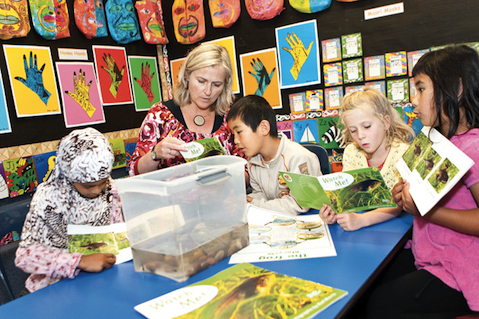Implications for teachers
Guiding questions He pātai
- How could we increase our understanding of the languages, texts, and literacy practices of the learning area(s) we teach?
- How could we build our understanding of our students’ strengths and needs in relation to the languages, texts, and literacy practices of specific learning areas?
- How could we provide our students with focused and effective explicit instruction and situated practice in this regard?
- How do we support students to, where appropriate, transfer their understanding of the languages, texts, and literacy practices of particular learning areas to other learning areas? How do we set expectations for this transfer?
Traditionally, primary school teachers have focused on teaching reading and writing as generic skills, largely within the learning area of English, and secondary school teachers have focused mainly on teaching the content knowledge of their learning areas.
The challenge for teachers in years 1–13 is to teach the languages, texts, and literacy practices of particular learning areas.
Literacy across the curriculum can be achieved by giving learners both explicit instruction and opportunities for situated practice in each learning area.
To provide explicit instruction and situated practice, teachers need to develop their:
- professional knowledge about the languages, texts, and literacy practices of the learning areas in which they teach
- capability to determine whether there is a gap between learners’ literacy skills and what they need to do to meet curriculum goals.
Literacy across the curriculum also requires teachers to understand the similarities and differences between the languages, texts, and literacy practices associated with different learning areas. Teachers need to understand when knowledge of the languages, texts, and practices of one learning area can be transferred to other learning areas and when it cannot. The case study below illustrates how a teacher investigated gaps in her students’ literacy skills in the context of history and tailored a response to meet the needs that she identified.
The new writing hub on Literacy Online provides strong support for literacy across the curriculum. It includes guides for improving writing progress in years 1–3, 4–6, and 7–8 and teacher support materials for writing in science, social studies, and English.
Curriculum Update 25 will discuss the hub in detail.
Learning the languages, texts, and literacy practices of history
Helen, a year 11 history teacher, found that her students’ capacity to present their knowledge of history in writing did not match their oral contributions in class. She analysed writing behaviours in class and samples of recent written work to identify her students’ writing needs. She also interviewed four students. The needs were for support in:
- recognising all aspects of the question and responding to each of them, possibly using them to help shape or structure the answer
- understanding general academic as well as subject-specific vocabulary, for example, “impact”, “effect”, or “outcome”
- (for some students) strengthening their planning skills before writing, for example, linking and sequencing ideas and building on notes
- using formal language
- knowing where one sentence ends and another begins when meaning is “run on” across several sentences
- proofreading and editing before completing the work.
Helen’s analysis showed that she did not need to spend time teaching basic essay structure, which the students largely understood.
Once she knew which aspects of writing to target, she was able to incorporate these into class and small-group work to help the students communicate – and demonstrate their history knowledge – as effectively in their writing as in their oral comments.

